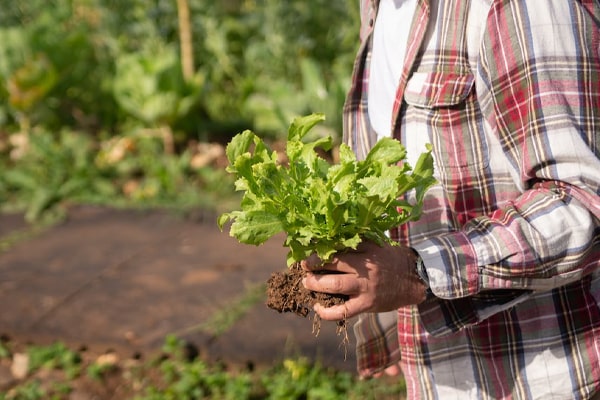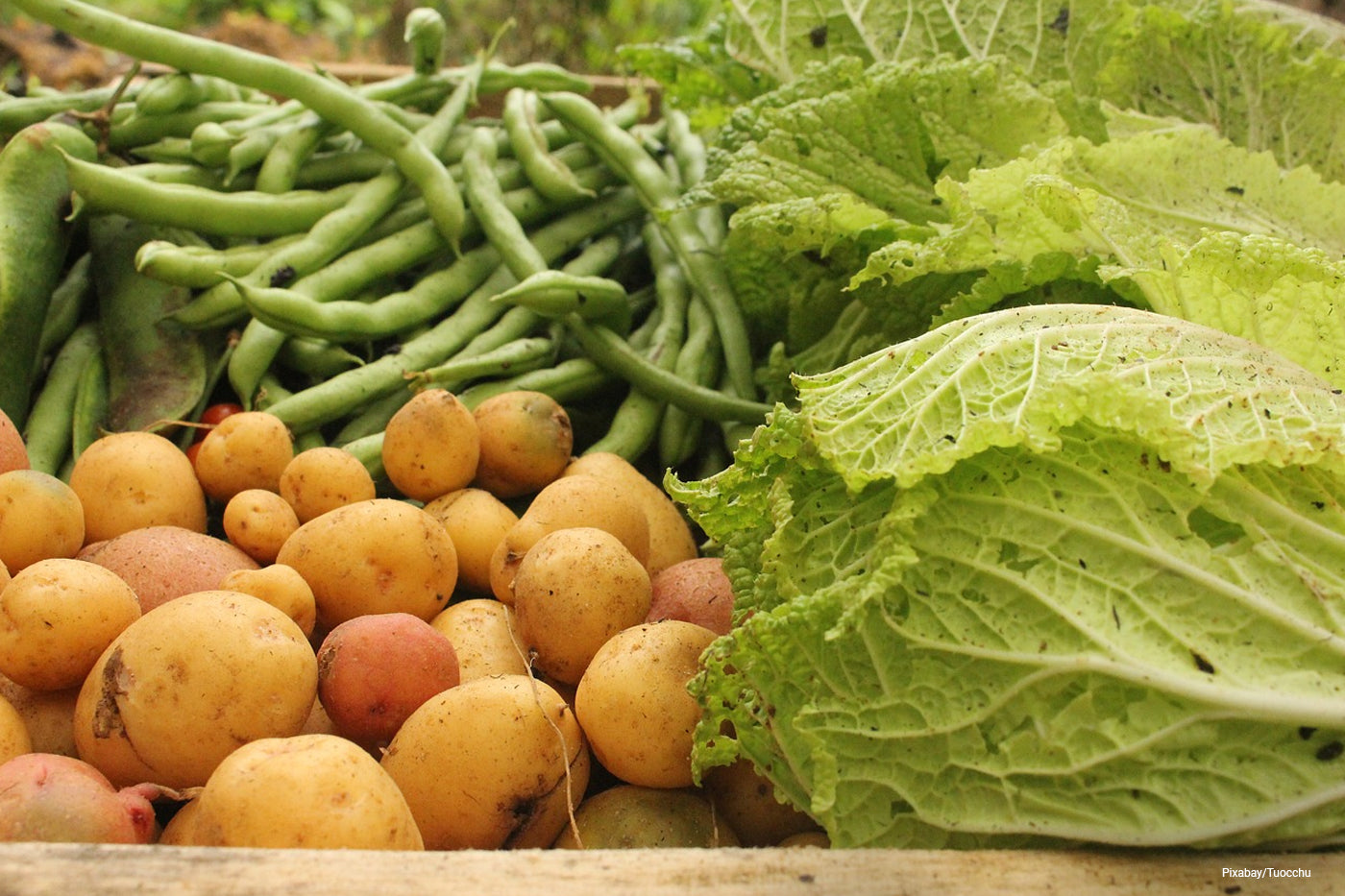There is just something so rewarding about growing a variety of crops from seed. And if you’d like to grow your plants from seeds but you are unsure how to start, this guide is for you! One thing to remember is that vegetables are the easiest to grow from seeds. But don’t let this fact keep you from sowing advanced crops in the future.
Growing plants from seed is perfect for people who’d like to hone their gardening skills. Since seeds are more affordable than buying fully-grown plants, you will also save more money when you start from seed. You’ll grow more of your favorite crops too. Seeds come in more variety so if you’d like to diversify, this is the perfect way to do it. Because you are growing the crops from seeds on your own, the crops become more resilient from the start.
Now before we get to our list of easy-to-grow crops, there are certain factors that you have to keep in mind to make your project a success. First is to get to know the pests and diseases that are common in your region. Pests and diseases vary from region to region. Climatic differences could also mean that some crops may be difficult to grow from certain regions. Ask an expert gardener what kinds of crops grow best in your local area.
Green Beans
Beans are, perhaps, some of the easiest crops to grow. Most variations of beans are incredibly beginner-friendly but our favorites are the snap beans or string beans, which grow best in milder climates. If you live in a hot region, we suggest growing lima beans, asparagus beans, and Southern beans.
Some beans are climbers, others, like the bush varieties, are not. If you want to extend your harvest, opt for the pole varieties. Most beans love the full sun and well-drained soil. But even if your garden has poor soil, green beans will find a way to thrive.

Beets
Most root crops are easy to grow but beets could be the easiest variety to sow from seeds. Beets are quick crops that do not take a lot of work to grow. Just sow the beetroot seeds in moist soil from March to July. By the time May to September come, you could look forward to a bountiful harvest. Some of the beetroot varieties we love are Boltardy and Boldor.
What makes beets so easy to grow is that they are naturally resistant to common garden pests and diseases. Maintaining beetroots is easy but be sure to keep the soil moist throughout the germination period so the seedlings grow up strong and healthy. Thin out the seedlings after germination, the seedlings are edible.

Cucumber
The crunchy texture and mild, soothing flavor of cucumber make it a perfect ingredient for salads and summer drinks. In warm regions, cucumber seeds could be sown directly into their final growing positions. Just like most vegetables, cucumbers love the full sun and rich, fertile soils.
Cucumbers, in particular, loves warm soils so we recommend planting this vegetable late in the spring season. This gives the soil a chance to heat up. Do note, however, that vines grow quickly but for good measure, plant several seeds to boost the pollination process. Cucumbers produce flowers that need to be pollinated otherwise; the crop could die before they mature.

Lettuce
Lettuce is a fast-growing green, leafy vegetable. It's a cinch to sow so you could start feasting on lettuce within a few weeks. Although lettuce grows so fast, you need succession sowing to ensure a steady supply of fresh greens. Lettuce seeds do not germinate in warm soils (80 degrees F or warmer) so do not sow directly into the soil during the summer season.
When starting from seed, don't forget to soak the lettuce seeds in water for faster germination. Plant the seeds in peat pots a few weeks before the last frost date in your region. Seedlings will need plenty of sunlight so use artificial light. Transplant the seedlings as soon as the soil has been worked in the spring. Lettuce loves well-drained soils that are rich in potassium and nitrogen.

Tomatoes
Tomatoes do not require much effort to grow from seeds. As long as the tomato plant is getting enough sunlight, it will thrive in-ground, in a pot, or in a hanging basket. You could grow the seeds in peat pots or use egg cartons or plastic cups, if you have many of these lying around.
We recommend using a seed starter mix to start the seeds strong. Within 1 to 2 weeks of planting the tomato seeds, they should start sprouting. At this point, set the pot in a sunny area and transfer to a larger pot once the seedlings grow. When the tomato seedlings are ready, plant in the garden and make sure to install a structure for support.

Pumpkin
Pumpkin is such a versatile vegetable, one that’s easy to grow and maintain too! You could plant the pumpkin seeds directly into the ground as long as the soil is warm and nutrient-rich. Pumpkins are quite greedy eaters so they need all the nutrients they could get from the ground.
Before sowing pumpkins, be sure to give them lots of room to grow. Space out the seeds to give the seedlings more room to grow once they sprout. Pumpkins are always thirsty so water regularly especially during the summer season when the weather is often hot and dry. Pumpkins are prone to powdery mildew so water only the base of the plant, not the leaves.
Before growing pumpkins, be sure that you have a lot of room to spare for these plants. They’re aggressive spreaders. Since pumpkins take a lot of space so they’re not the best plant to grow if you have a small garden.

Zucchini
Zucchini is such a prolific grower, sowing from seeds is almost effortless. You could sow the seeds in a pot or directly into the ground. As long as the soil is moist and warm, the zucchini seeds will germinate in no time at all. Zucchinis are grown best during the summer season because the conditions are just right.
If you are growing zucchinis indoors, start the process six weeks before transplanting the seedlings outdoors. Do not plant too early because zucchini cannot tolerate the cold temperature. Because zucchinis are fast growers, they should be ready to harvest a month from planting. If you want a steady supply of zucchini, try succession planting.

Radish
This easy to grow root crop could be planted several times in one growing season. Sowing radishes from seeds is so easy, you could grow these in pots indoors or directly into the ground. You could plant in both the spring and the fall season but when the weather is warm, suspend the planting until it’s cool again.
During springtime, sow the seeds 4 to 6 weeks before the average date of the last frost. What’s important when growing radishes from seed is that the roots must remain undisturbed at all times. That’s why most growers prefer planting radishes directly into the ground. Give the seeds about 12 inches of space apart so the seedlings have more room to grow.

No need to be a seasoned gardener to enjoy fresh vegetables that you grew on your own! These crops are so easy to grow from seeds, they don’t require much upkeep. Found these gardening tips helpful? Tune in for more updates. Subscribe to our newsletter today to get the latest gardening tips and resources straight to your inbox!



